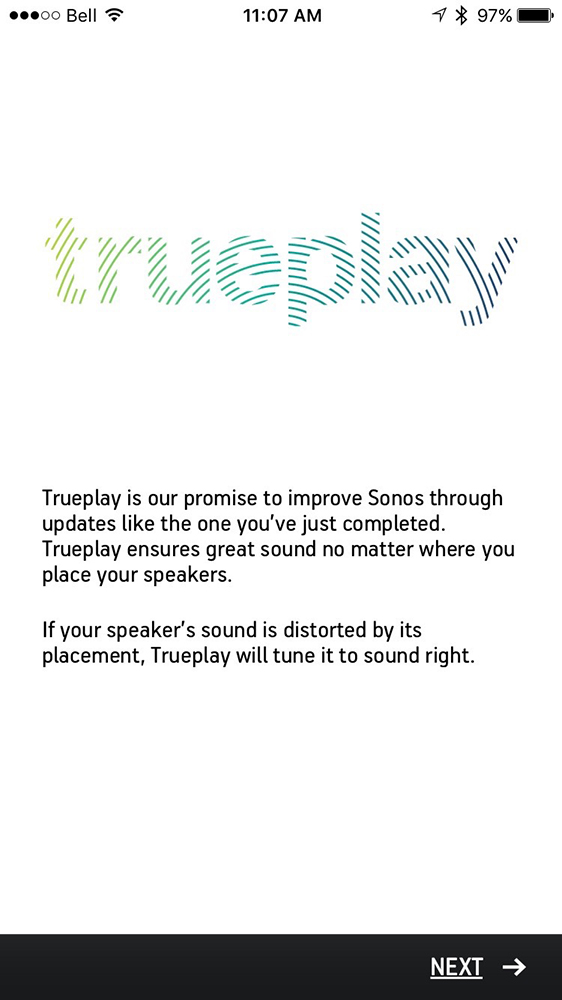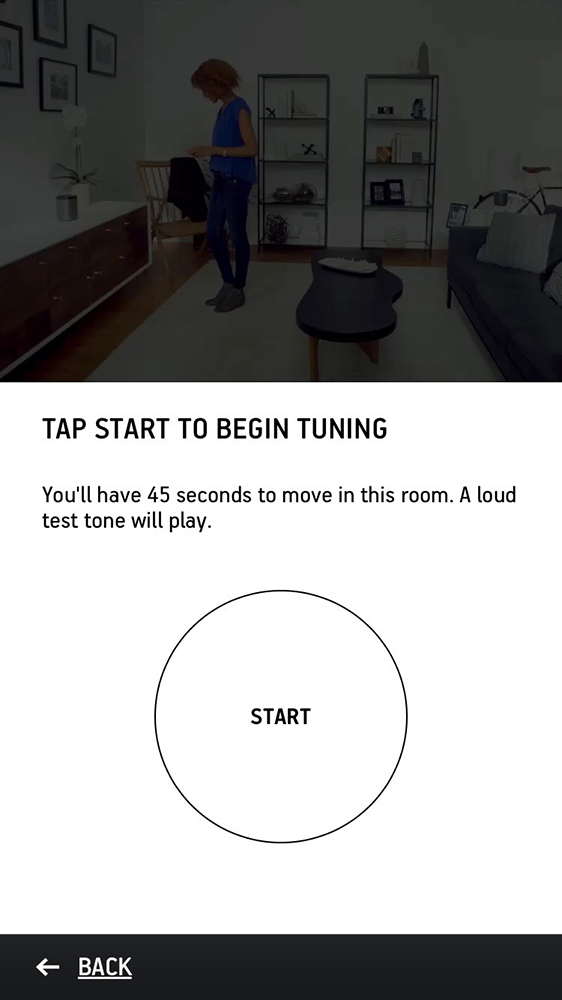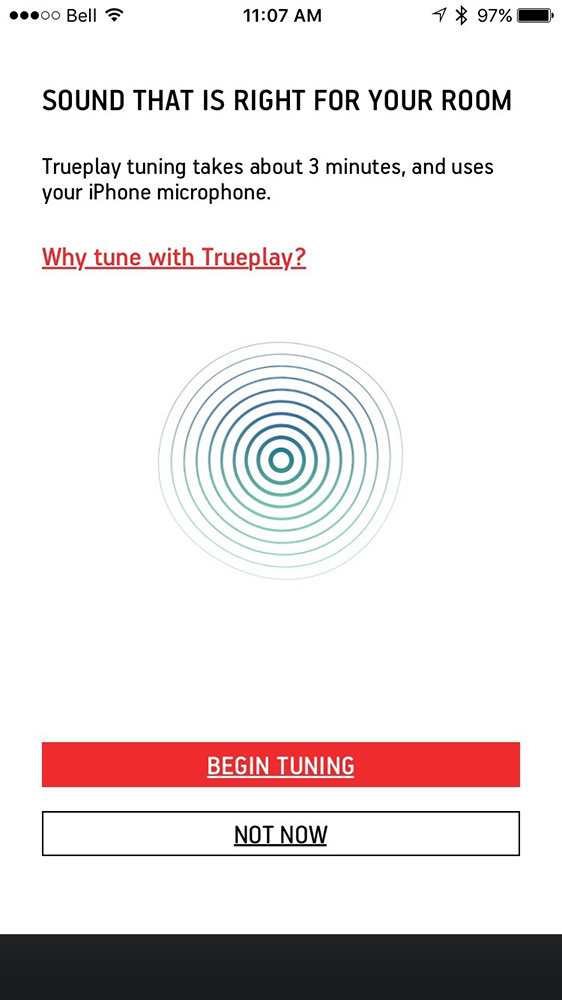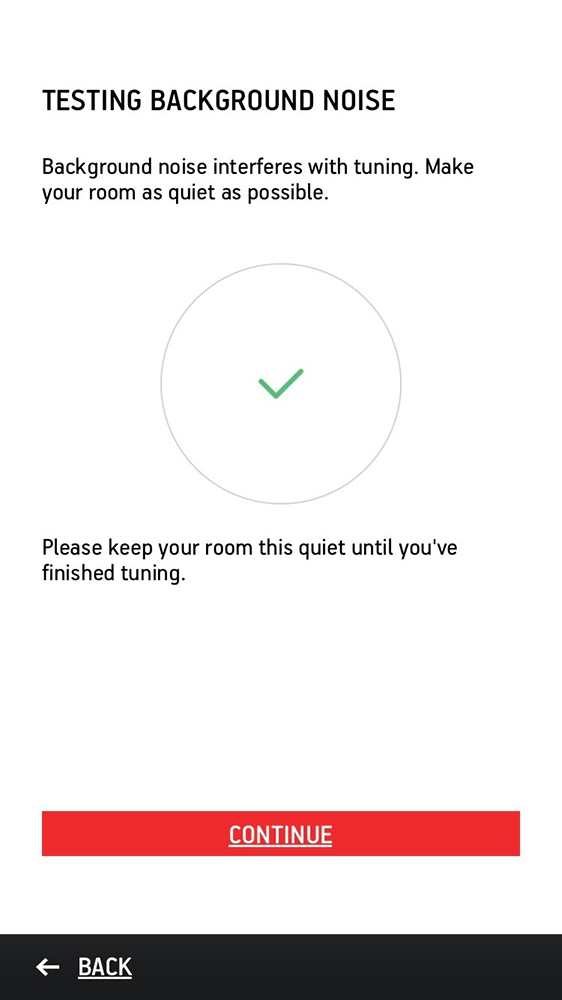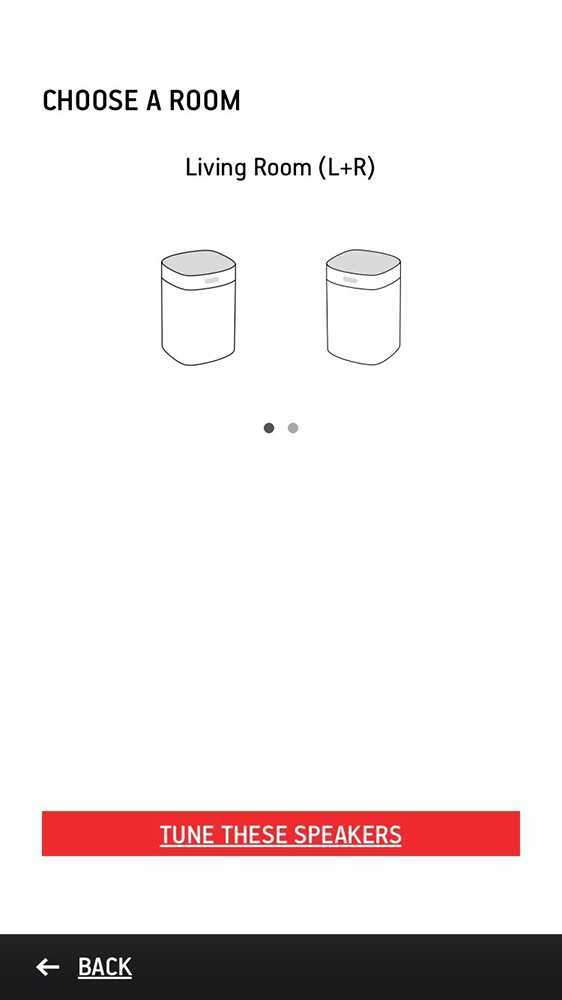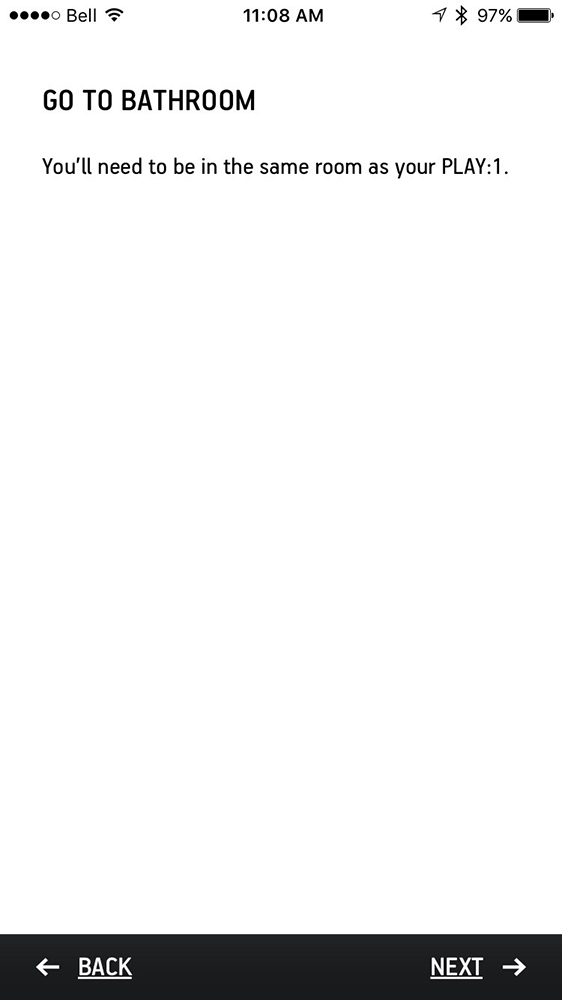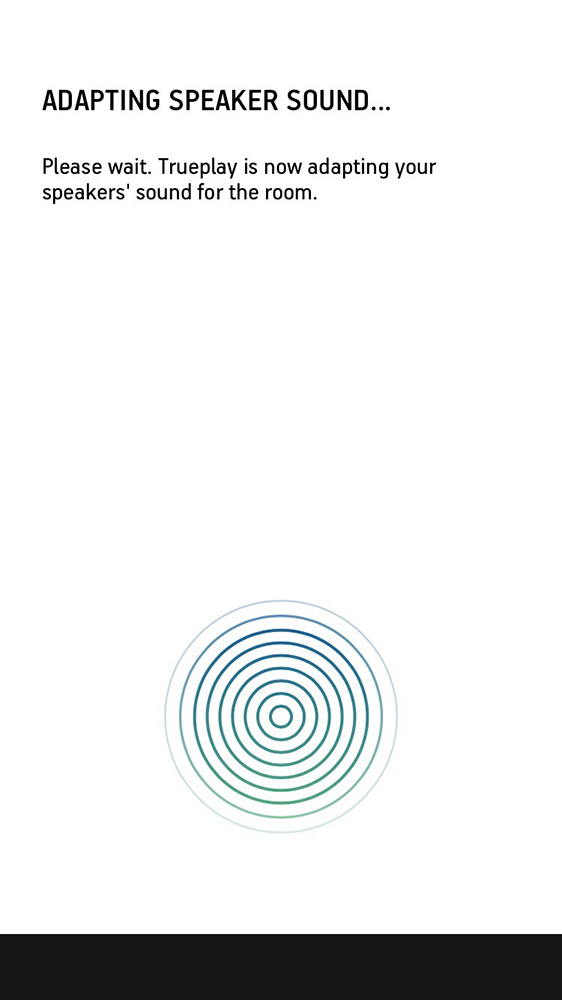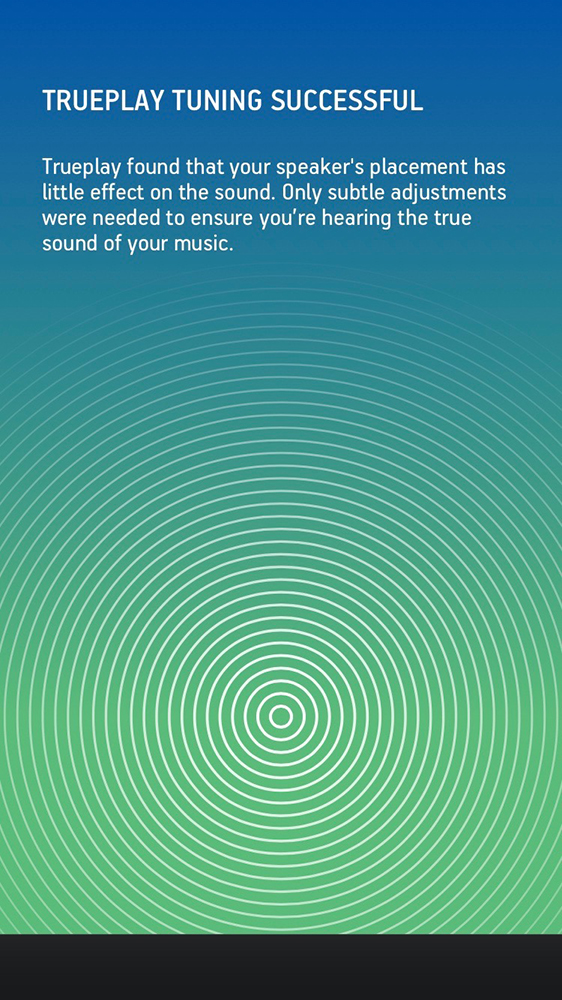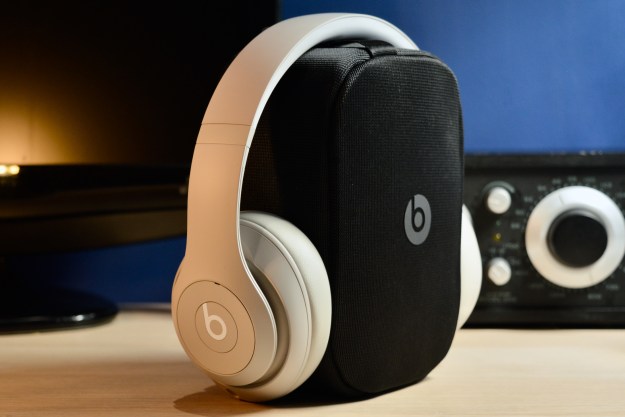You’d look like you were trying to scare away evil spirits, or perhaps purge the room of a really bad fart.
That’s because Sonos, in its unwavering desire to offer the ultimate in simplicity for music lovers, has never given its users access to EQ control. It’s not that they can’t — there’s no physical or software-based reason for its absence — after all, the company does let you alter both treble and bass characteristics, and provides a switch for loudness, for every speaker under the system’s control. It’s just that Sonos is philosophically opposed to this kind of mucking about with acoustic dynamics. Perhaps it’s just afraid that if people start pushing sliders up and down across the full range of frequencies, the company’s phone-based tech support people will start getting flooded with calls about poor sound quality?
Whatever the reason, Sonos has decided to acknowledge that the careful calibration it does with all of its all-in-one speakers at the factory might not actually be the right settings for your particular room set-up. Last week, they released a new version of their software which includes the “Trueplay,” option for the Play 1, Play 3 and Play 5 speakers (the company says it will be available on other products “soon”), which gives users an entirely new way to customize the sound of their
How it works
Trueplay uses the microphone built into iPhones and iPads (sorry Android users, you haven’t been included in the Trueplay party yet) to analyze the specific acoustic properties of the room in which you’ve placed your Sonos speaker(s). It then ”smartly tunes that speaker so the music sounds its very best,” according to the company’s press release.
In practice, this analysis and tuning is actually kind of hilarious. When you embark on the Trueplay process, the app first asks you flip your phone or tablet around so that the mic (which is at the bottom of these devices) can have unfettered access to room sound. It then measures the ambient room noise to see if it’s quiet enough to proceed with the next step. If it is, the Sonos speakers in your room will start to emit a loud, psychedelic repetitive sound pattern that vaguely evokes vintage sound effects from Doctor Who.
Here’s the funny part: While the speakers pump out this sound, you must walk slowly yet efficiently around the room while you wave your iDevice up and down. You must do this for 30-45 seconds so that the app can get a feel for how sound bounces off the various surfaces in the room. The app encourages you to spend the most time near the area that you will be doing most of your listening from (say a couch or dining room table). Even though this is a really clever use of the built-in mic — take note makers of home theater receivers — you feel somewhat shaman-esque as you perform this device-waving ritual again and again in each room. If someone were to spy you through a window, you’d look like you were trying to scare away evil spirits, or perhaps purge the room of a really bad fart.
Once the Trueplay tuning process is complete, you can go back into the room settings and flip Trueplay on and off while music is playing so that you can hear the before and after. If you think it sounds better on, great, leave it turned on. If you don’t hear much difference or decide to change the location of your speaker, you can run through the tuning process again. Or you can just leave it turned off.
The results
So does all of this walking and waving make a difference? Yes, it does, but how much of a difference will depend on the room and your chosen speaker placement. We have four Sonos rooms in our house, three of which have single Play:1 speakers and one that has two of them set up as a stereo pair. In our kitchen, living room, and bathroom (yes, we have a speaker in our bathroom, stop being so judgy) Trueplay made almost no difference at all. To be fair, it knew that it wasn’t going to be having a big impact and told me so at the end of the tuning, noting that “only subtle adjustments were needed.”
In the master bedroom, however, Trueplay’s tuning made for a distinctly different sound. Check out the clip below to hear the difference:
Now before you recoil at the relative tinny-ness of the Trueplay effect, keep in mind, I recorded this with my iPhone so it’s not going to be a true reflection of what I actually heard. But you can tell what’s going on. Trueplay has altered the higher frequencies to bring out the vocals (thanks Adele!) while it diminishes the low end so as to keep everything crisp and prevent muddiness from creeping in. I know it doesn’t sound like an improvement necessarily, but trust me, the Trueplay “on” sound is much more faithful to what you’d hear if you listened to the same track on your computer with a decent pair of headphones.
But why did this room change so much when the others didn’t? Chalk it up to speaker placement. In our living room, for instance, our stereo Play:1s are placed on small end-tables, about 1 foot from the nearest wall and with soaring 10-foot ceilings overhead. It’s generally a wide open space with a few seats and a couch. The bedroom is a different story entirely. There, the single Play:1 is crammed in a corner, with less than 1 inch of space between it and the two nearest walls. Moreover, it has only about a foot of overhead before the ceiling slopes down to meet the walls. Hardly a recipe for decent audio, and there’s no question–the factory settings were just not cutting it.
Conclusion
If you’ve got some unusual speaker placements going on at home, or perhaps your room isn’t exactly a text-book box shape with lots of open space, Trueplay will definitely give you a cleaner, more vibrant and brighter sound delivery that does a particularly good job of enhancing vocals or higher-end frequencies. But your mileage will vary based on just how non-standard of a set-up you’ve got. The Trueplay tuning process is an easy–if a bit odd–way to adjust the EQ on any Sonos speaker to better reflect the acoustic properties of your space.
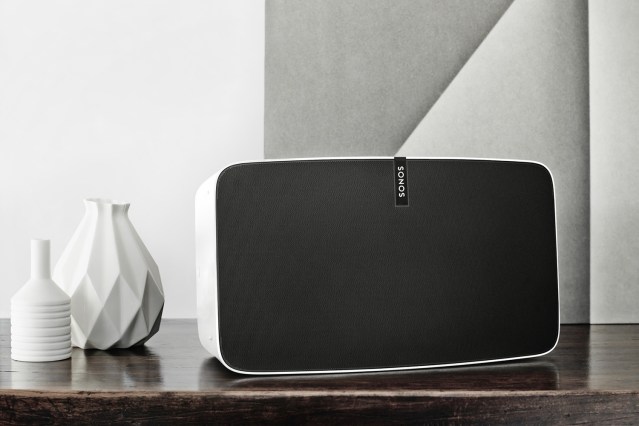
That said, now that Sonos has proven willing to make EQ adjustments to their speakers after they leave the factory, the company needs to open those doors all the way and let consumers make their own adjustments. Trueplay is great for people who want a “wizard” approach to custom EQ, but for those of us who have distinct audio preferences (or those who simply don’t like how Trueplay interprets our environment) there needs to be a full set of EQ sliders. It’s been an omission since day 1 on
Oh, and would it be too much to ask to be able to sort my music by decade? Old dudes like me need to relive our glory days and since I don’t own a DeLorean …
Editors' Recommendations
- Finally, you can use a Google Nest smart speaker or display to find an iPhone
- Can a game like Dark Souls work on the iPhone? Pascal’s Wager wants to find out
